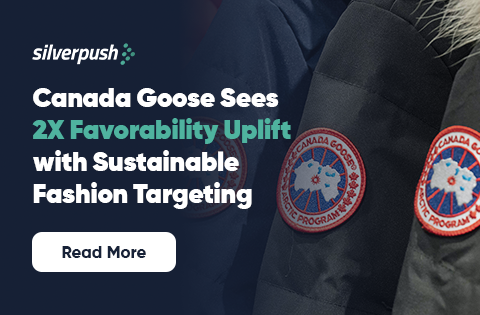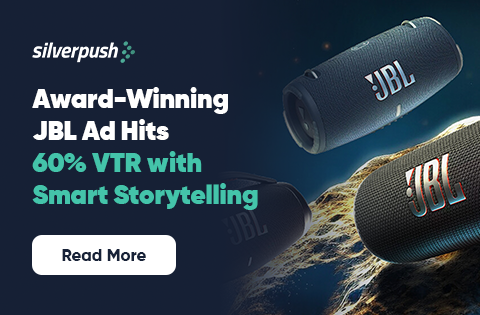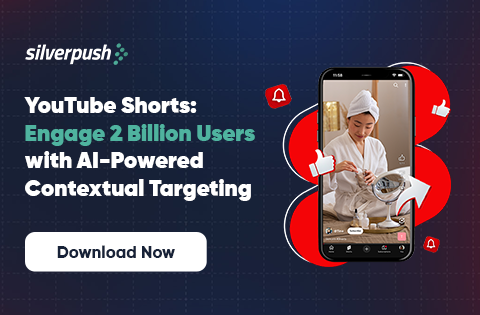Unlocking the Power of Hispanic Heritage Month: A Guide for Advertisers
PUBLISH DATE: 13 September 2023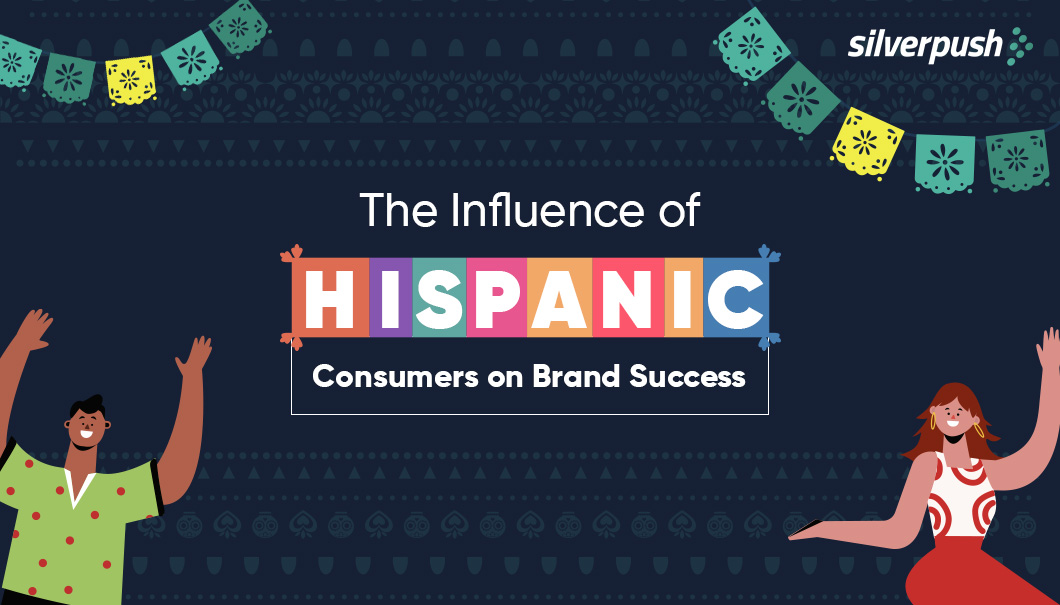
With $2.5 trillion worth of buying power, the Hispanic market is no longer a niche market, but a ‘new majority’.
The Hispanic population currently stands at 62.65 million which is nearly 20% of the U.S. population. Projections suggest it will reach 111.22 million by 2060, playing a major role in U.S. population growth.
The Hispanic audience in the United States is a diverse and affluent group that is quickly becoming one of the most influential markets. However, many advertisers have yet to tap into this market.
By understanding the diversity of the Hispanic community and what matters most to them, advertisers can connect and engage with this valuable audience. This is an essential strategy for brand growth.
Hispanic Demographics: A Growing Influence
The Hispanic and Latino demographics saw the fastest growth, with 2.4 million households earning over $150k annually, a 13% increase. They also hold a significant presence in the income bracket just below, with 3.6 million households earning between $90k and under $150k, comprising 14% of that category.
As a group, U.S. Hispanics’ GDP is expanding faster than those of Germany, the U.K., France, and Japan.
Hispanic and Latino Americans hail from a wide array of backgrounds, encompassing countries in Latin America, the Caribbean, and Spain. Within this community, one can find a mosaic of cultures, languages, traditions, and religions. This multifaceted diversity is joyously celebrated throughout the month with a kaleidoscope of festivals, music, dance, art, and cuisine.
However, when it comes to brands and advertisers, there seems to be a common oversight in their approach of targeting them in spite of so much potential. This overlook could be due to the challenges faced by the advertisers.
Here are some cultural insights that are effective in increasing enjoyment and engagement with your ads among U.S. Hispanics.
1. Celebrities and influencers: Charismatic celebrities and influencers can help you introduce your brand or products to Hispanic consumers. When choosing an endorser, make sure they are a good fit for your brand and that their values align with yours.
2. Tap into Music and cultural affinity: Use music and other cultural touchpoints to connect with Hispanic consumers on an emotional level. This could involve using Spanish-language music, featuring Hispanic artists, or incorporating cultural symbols into your marketing materials.
3. Create escapist marketing campaigns: Hispanic consumers are drawn to marketing campaigns that offer a sense of hope, adventure, or nostalgia. This could involve creating a fantasy world, telling a heartwarming story, or tapping into a shared cultural experience.
4. Family-focused: Family is a central value in Hispanic heritage. When marketing to Hispanic consumers, make sure to highlight the importance of family in your messaging. This could involve showing families spending time together, celebrating holidays, or overcoming challenges.
5. Community: Hispanic consumers are more likely to support brands that are involved in their communities. Get involved in local events, donate to Hispanic charities or sponsor Hispanic-focused organizations.
Challenges and Pitfalls in Multicultural Advertising
Multicultural advertising also presents unique challenges. Here are some common pitfalls and potential obstacles that businesses may encounter, such as –
Overgeneralization – The Hispanic community is a diverse community in itself. While targeting the community advertisers often opt for a “one-size-fits-all” approach and do not acknowledge that individuals within the same Hispanic ethnic group can vary significantly. This results in an overabundance of cultural touchstones from one country and alienating another country in the process. Or, more drastically, targeting Latinos and calling them Hispanic and vice-versa.
Language barriers pose a significant challenge when it comes to advertising to the Hispanic community. This is because the community comprises various Spanish dialects, bilingual individuals, nuanced cultural differences, varying levels of acculturation, and flexible language usage. Mere translations may not effectively convey the intended message and can even lead to offensive content.
Understanding the cultural norms, values, and social dynamics of the target audience is essential for creating advertisements that resonate and hold meaning for them.
Additionally, multicultural advertising should prioritize accurate and inclusive representation. This means showcasing a variety of voices, perspectives, and experiences in advertisements.
So, how can advertisers overcome these challenges?
Tailored Solutions to Reach Hispanic Heritage Consumers with Hyper-Contextual Targeting
Even well-crafted creative campaigns targeting the U.S. Hispanic heritage community may falter if they are not strategically placed where the audience can easily access them.
In today’s advertising world, where businesses rely on first-party and contextual data to reach their target audiences, it is important to partner with organizations that have valuable insights into the Hispanic community. These partners should have data on the community’s various segments, individual consumers, and interest trends. They should also have the technology to activate this data and deliver relevant marketing messages to Hispanic consumers.
Silverpush presents cutting-edge AI technology, Mirrors, which can play a pivotal role in precisely targeting the multicultural audience. The next-gen AI technology is the first video visual and audio key contexts identifying technology that uses a combination of contextual signals to reach your most relevant consumers at the right moment/context.
The advanced AI technology identifies personas using demos, cultural signals, core values, and content preferences. We analyze 20+ languages and entertainment choices (e.g. Telenovelas, movies) in Spanish & English. Furthermore, their passion points are identified by analyzing the activities and areas of life of people having deep interest & priority when spending their time, money, and attention. E.g., family, emotions, sports, music, food, and important dates.
Also Read: Silverpush Paves the Way in Revolutionizing Contextual Advertising with Generative AI Technology
What Does Hyper Contextual Targeting For Multicultural Advertising Do for Your Brand?
Relevant advertising is what users want. They want to see ads that are relevant to their interests and needs at the moment. Inclusive advertising, when done right, can build trust, and loyalty, and drive purchase intent.

Conclusion
It’s clear that U.S. Hispanic heritage is a massive force, driving the economy and influencing the future. As the fastest-growing adtech company, Silverpush has the products and capabilities to help brands engage with America’s growth engine in culture, language, and across touchpoints. From unparalleled ratings momentum to the recent launch of the biggest Spanish-language streaming brand in the world.
Navigating Path with Contextual Advertising in a Programmatic Advertising Landscape
PUBLISH DATE: 29 August 2023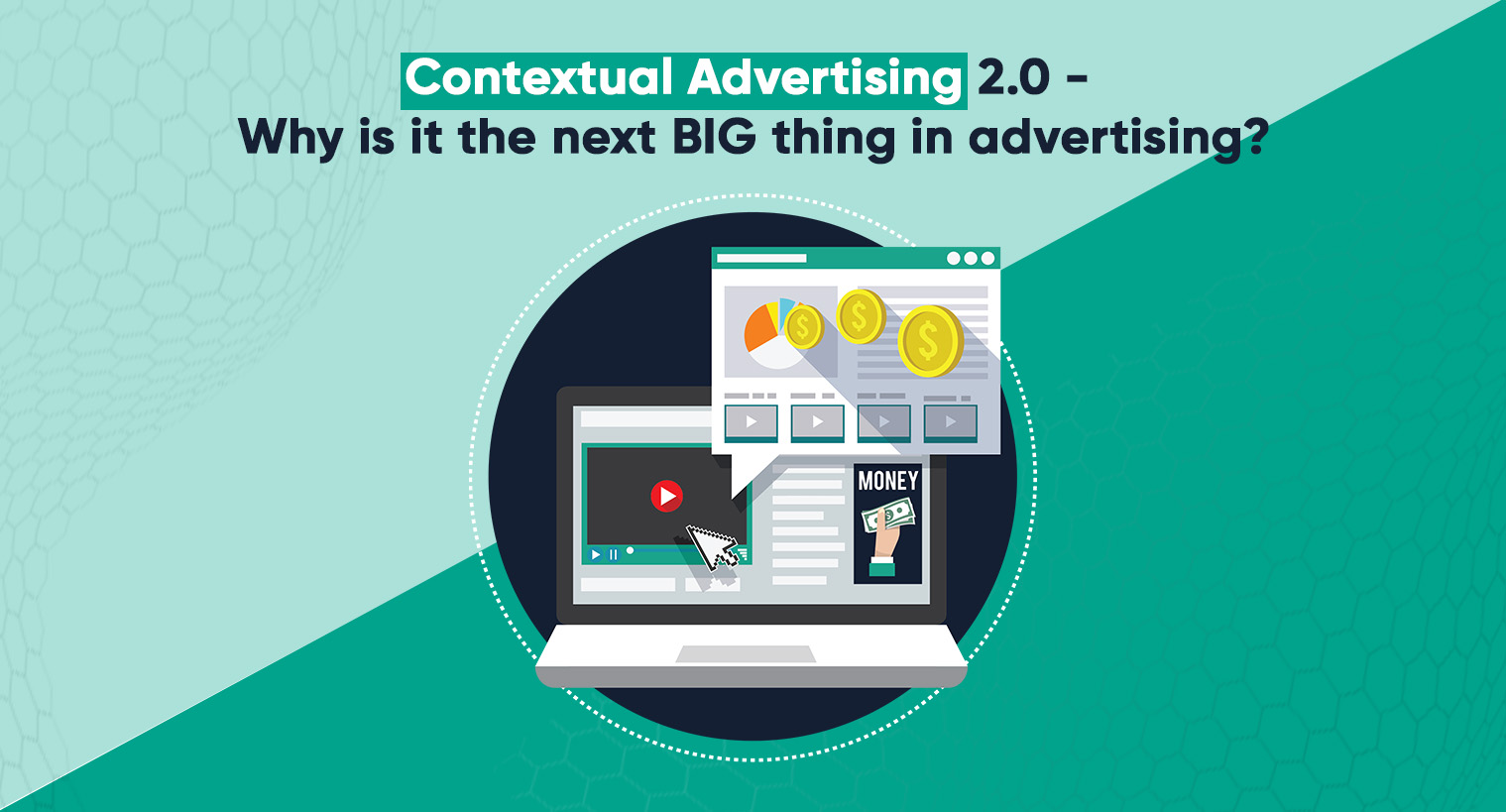
In the rapidly changing landscape, a seismic shift is underway. We are living in times when automation has taken center stage in all sectors, especially advertising.
Gone are the days of laborious manual toil for advertisers and publishers alike. Enter programmatic advertising, the game-changer that harnesses data and technology to plan the perfect sync of ads, reaching their intended audience at the precise moment.
The prediction of global programmatic ad spending is to reach 725 billion by 2026. The United States remains the leading programmatic advertising market worldwide. However, advertisers often encounter, two major challenges with programmatic ads:
- Lack of transparency
- Ineffective targeting
The programmatic advertising environment is intricate and opaque, making it challenging for advertisers to comprehend how the advertisements are deployed. As a result, advertisers waste money on ads and overpay. Programmatic advertising falls short of engaging the target audience since it heavily relies on data.
Also Read: What is Programmatic Advertising?
Navigating Path for Advertisers to Overcome Obstacles
Along with these challenges, there is another elephant in the room, the demise of third-party cookies.
With the third-party cookies phase-out, tracking user data will be difficult as they will not have a unique identifier that can be used to track users across multiple websites.
In this evolving landscape, advertisers find themselves at a crossroads.
- They are in desperate need of a solution that offers them a way to overcome the programmatic ad challenges.
- A solution that targets ads without interfering with the user’s privacy.
As a solution, contextual advertising is a ray of hope.
Contextual Advertising as a Solution: How?
In the dynamic realm of advertising, contextual advertising isn’t a newcomer. This methodology which aligns ads with the surrounding content, lost its spotlight as advertisers pivoted towards behavioral targeting, a strategy yielding superior outcomes by delivering personalized ads.
Yet, the relentless pursuit of personalization led to an overindulgence, raising concerns among users about data misuse and their digital safety.
The privacy concerns of users led to the introduction of strict guidelines by GDPR and CCPA along with major browsers banning the use of third-party cookies.
These changes have made advertisers retrace their steps to an older path of advertising– Contextual Advertising.
Contextual display advertising focuses on aligning the ad with the content of the web page rather than emphasizing the user’s data.
The AI-powered system identifies key contexts of the web page’s content and serves the most relevant advertisement based on contextual cues.
For example, a user engrossed in an article about car maintenance encounters an ad spotlighting the latest automobile release by a prominent brand. Here, the connection is made not through personal data but through content relevance.
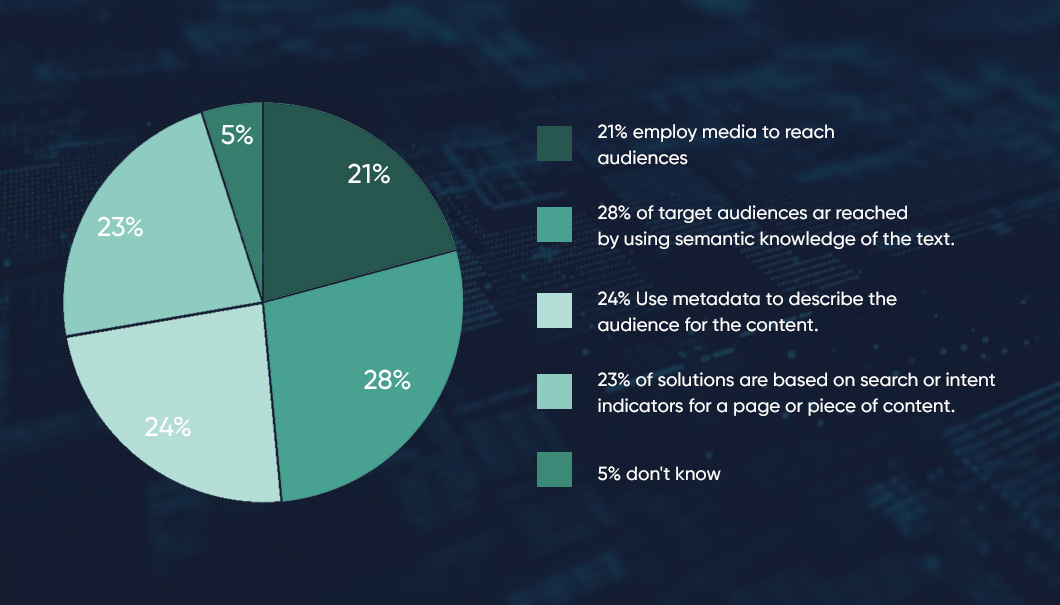
Contextual targeting 2.0: Why is it better this time around?
As the world moves forward, contextual advertising is pacing up with it! The recent advancements in algorithms have helped advertisers to perform hyper-contextual targeting.
Natural language processing (NLP) is used to analyze the text content of web pages in order to help advertisers understand the context of the content.
Machine learning is used to develop algorithms that can predict the likelihood of a user clicking on an ad. This can enhance the ROIs and ensure advertisers that they are only paying for ads that are likely to be clicked on.
Hyper-contextual targeting is still in its early stages, but it has the potential to revolutionize the way that advertising is targeted. As AI and ML continue to develop, hyper-contextual targeting is likely to become even more accurate and effective, leading to better results for advertisers and publishers alike.
Get Started with Contextual Advertising Today!
AdTech organizations are taking full leverage of this evolving time! Silverpush, a leading ad tech organization, has introduced Mirrors, an AI solution for programmatic contextual advertising.
Mirrors comprehensively identify key contexts across webpages, including text, images, and videos. Utilizing Natural Language Processing (NLP), it identifies keywords and categorizes content. Additionally, AI-powered technology employs video analysis for image recognition, effectively identifying celebritiy name, brand name, and various activities within images.
Furthermore, Mirrors employs semantic analysis on the content of a webpage. This enables the extraction of significant information, including emotions and instances of sarcastic expression. This extracted information contributes to the deployment of relevant advertisements.
Still not convinced? We have more!
Unlocking Advantages
1. Abides by strict privacy guidelines: According to a study, 72% of Americans are concerned about their privacy.
Contextual advertising abides by the privacy guidelines set by GDPR, COPPA, and CCPA as it doesn’t rely on cookies rather it depends on the content the user is consuming.
2. Drives high Return on Investment and Return on Ad Spend: Contextual programmatic advertising leverages the already generated interest of the user. Since the user is already intrigued by the topic, the chances of the user clicking on relevant ads increase significantly.
3. Relevant to the user: The audience demands relevancy, when tailored ads are shown to the user they feel more comfortable. According to a study, 79% of UK consumers are comfortable seeing contextual ads.
4. Brand safe: While focusing on user privacy advertisers also need to focus on their brand’s safety as well. Brands’ reputations must not be compromised at any cost. Wrong ad placements have often led to a damaged reputation and revenue loss. Since ads are placed based on relevancy, brands can ensure that their ads are placed in brand-safe and suitable environments.
Final Thoughts
Contextual programmatic advertising becomes a sustainable choice for the advertising landscape. As tracking methods like cookies are fading away and brands and advertisers are emphasizing privacy-focused targeting approaches.
Combining contextual programmatic targeting with artificial intelligence and machine learning can provide advertisers with valuable information for effective targeting. This approach offers a wide range of insights to help advertisers reach the right audience and fit seamlessly in the evolving landscape.
Don’t Let Keyword Overblocking Kill Your Reach: Here’s What to Do
PUBLISH DATE: 11 August 2023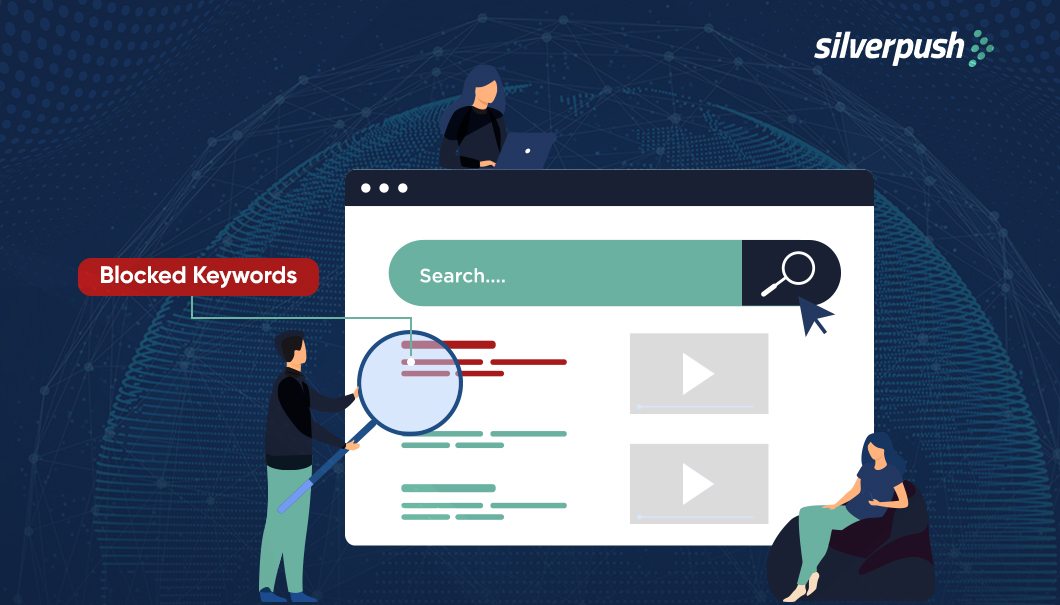
For advertisers, protecting their brand from inappropriate content is of utmost priority. When advertisements appear alongside harmful content, it has the potential to significantly damage the brand’s reputation. According to data, 54% of consumers hold a negative perception of brands that associate themselves with morally conflicting content.
This, in turn, can have a substantial impact on their advertising revenue, leading to decreased click-through rates (CTRs) for ad campaigns.
But, protecting your brand image does not equal being too restrictive with keywords or blocking keywords excessively as this can negatively impact your reach and represent a hugely wasted opportunity for both sides of the advertising ecosystem.
If your brand struggles to reach more people due to blocking too many keywords in the past, this blog is here to help. Keep reading to learn how you can avoid overblocking keywords and improve your reach.
How Keyword Overblocking is Killing Reach and Monetization Opportunities
Many advertisers employ brand safety measures to ensure their ads are not displayed alongside inappropriate content. A common example is a children’s brand ensuring their ads don’t appear next to adult-oriented material.
Another layer of protection often used by advertisers and agencies is keyword blocking. This allows them to prevent ads from being shown alongside content containing specific words. For instance, a family-friendly brand might block the keyword “porn.”
However, excessive keyword blocking can lead to a problem called overblocking. This can diminish the reach of your online ads and cause your ads to miss out on relevant searches.
Several reasons highlight why overblocking can harm your ad campaign’s effectiveness:
1. Missed Relevant Searches: Overblocking can prevent your ads from showing up for searches closely related to your target keywords. For example, if you block “free shipping,” your ads might not appear for searches like “buy shoes with free shipping.”
2. Reduced Relevance: Overblocked ads may appear for irrelevant searches, making them less appealing to the audience. This can lead to fewer clicks.
Finding the right approach to keyword blocklists doesn’t have a one-size-fits-all solution. While some keywords (e.g., “terrorist”) are clearly necessary to block, an excessive list can overly restrict your digital advertising. This can lead to less effective spending and disappointing results.
Here’s How to Make Your Advertising More Inclusive
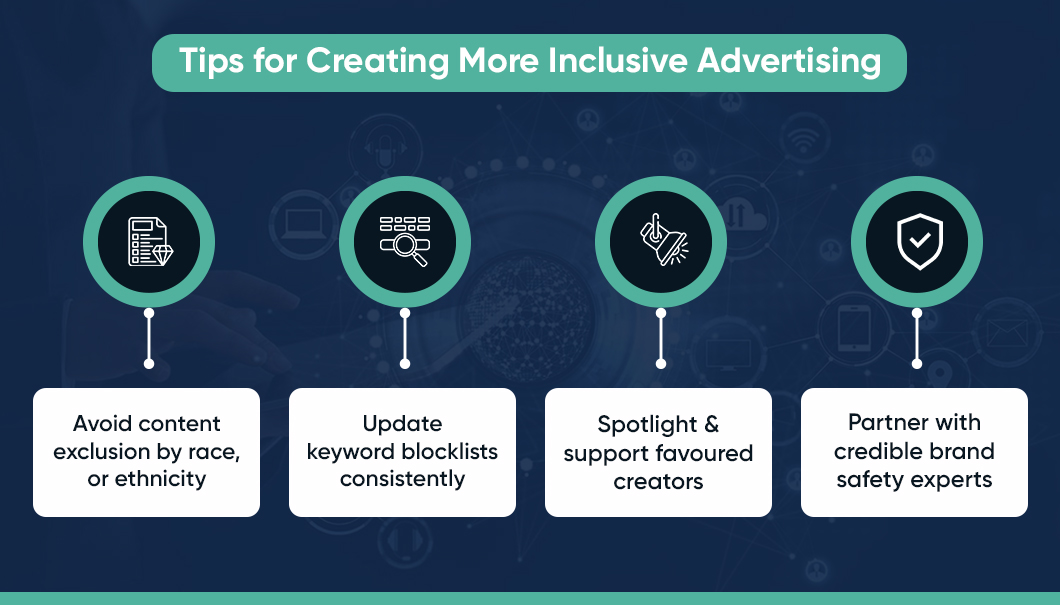
Of course, it’s important to focus our attention on brand safety. But as an industry, we need to think of new ways to implement brand safety without excluding creators based on their sexual orientation, race, or ethnicity.
The keyword blocklists that were relevant in the past might not be as effective today. Even though they needn’t be removed completely, you must regularly update them to avoid mistakenly classifying suitable content as harmful.
Ensure inclusion by amplifying preferred creators’ voices and carefully monitoring brand safety partnerships.
This final point is one we don’t see considered often enough. Working with a third-party brand safety and brand suitability partner can help with your brand safety measures.
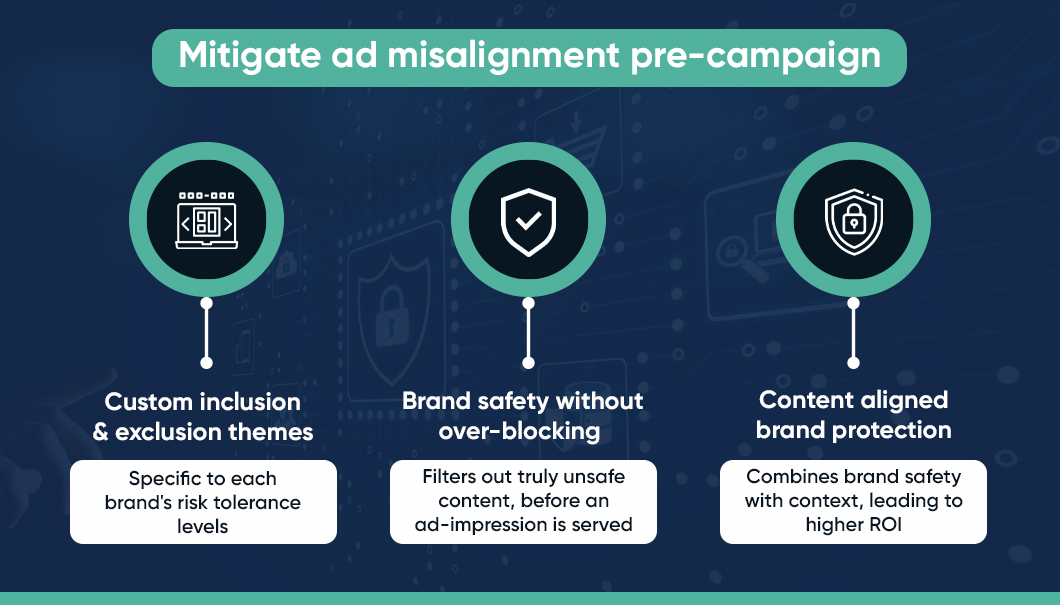
Leverage the power of Silverpush, a leader in AI-driven contextual targeting, and its cutting-edge solution, Mirrors.
It offers custom targeting and exclusion themes to accurately identify unsafe content across a comprehensive set of brand safety categories. It ensures that only the unsafe video or page is blocked and not the entire channel or website to
Avoid over-blocking or killing reach.
This is done across multiple platforms, such as YouTube, Openweb, and Meta, using natural language processing (NLP) and semantic analysis.
Moreover, Mirrors’ Multicultural targeting approach ensures avoiding stereotypical assumptions and targets diverse audiences through inclusive and personalized ads that respect individual preferences.
It does not end here, Mirrors offers a multitude of capabilities, to know how Mirrors can effectively solve the overblocking problem and ensure your reach is uncompromised, fill out the form on your right and an expert from our team will contact you soon.
Last Words
In the advertising industry, it’s essential to embrace changes to brand safety measures to ensure that we are not excluding words, phrases or languages that could exclude minority groups. It’s time to move forward with your approaches to brand safety. When we do, we’ll be creating an online world that promotes positivity and inclusivity.
Personalization Vs Privacy: Advertisers Struggle to Find the Right Balance
PUBLISH DATE: 03 August 2023
72% of consumers are comfortable with personalized ads if they’re relevant and not intrusive.
Today’s digital world has left advertisers at a crossroads between two essential yet conflicting concepts: personalization and privacy.
On one hand, consumers crave personalized experiences that cater to their unique needs and preferences. On the other hand, the growing concerns surrounding privacy breaches and data misuse have led to a demand for stronger data protection measures.
According to data, 62% of consumers expect personalization, claiming a brand will lose their loyalty if their experience is not personalized. This makes it indispensable for advertisers to reach their users with tailored content.
However, this doesn’t necessitates invasive tracking or acquiring users’ personally identifiable information (PII). Instead, the focus should be on comprehending the underlying intentions that drive their online presence and presenting them with contextually relevant and personalized information. An example of this is beauty brands like Ulta and Sephora offering quizzes to their first-time visitors to better understand their wants and needs.
This blog dives into the intricacies of this ongoing struggle and explores the challenges and potential contextual advertising solutions for brands to find the right balance between personalization and privacy.
The Power of Personalization: Enhancing Customer Experiences
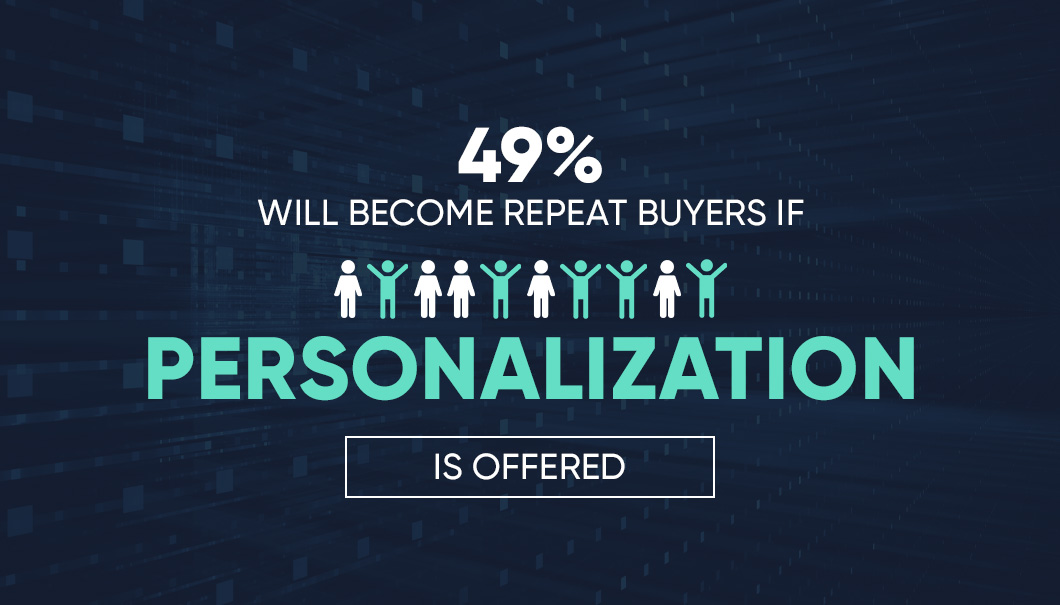
By understanding the individual needs and preferences of each customer, businesses can create personalized experiences that resonate with them on a deeper level. This can lead to a number of benefits, including:
1. Increased Customer Satisfaction
When customers feel like they are being treated as individuals, they are more likely to be satisfied with their overall experience. This can lead to repeat business and positive word-of-mouth referrals.
2. Improved Conversion Rates
Personalized experiences can help businesses convert more leads into customers. For example, a study by McKinsey found that personalized recommendations can increase sales by up to 20%.
3. Reduced Customer Churn
When customers feel like they are valued and understood, they are less likely to switch to a competitor. A study by Bain & Company found that a 5% increase in customer retention can lead to a 25% increase in profits.
4. Increased Brand Loyalty
When customers have a positive experience with a brand, they are more likely to become loyal customers. This can result in repeat business and positive word-of-mouth referrals.
Consumer Privacy is a Challenge and an Opportunity
While personalization offers benefits, the data required to fuel it often raises concerns about privacy. High-profile data breaches and stories of personal information being mishandled have fueled a collective unease among consumers.
The Cambridge Analytica scandal and the subsequent implementation of regulations like the General Data Protection Regulation (GDPR) and the California Consumer Privacy Act (CCPA) have underlined the importance of safeguarding user data. This conflict is understandable; consumers want personalized experiences, but not at the cost of their privacy.
As per research conducted by Deloitte, 33% of American consumers indicate that if they do not receive a satisfying experience, they might move to the next most suitable solution. Striking the right balance is imperative for advertisers to build and maintain trust with their target audience.
Also Read: Contextual Ad Targeting Allays Consumer Privacy Concerns
Leverage Mirrors Generative AI to Comprehend Behavior and Deliver Privacy-Respecting Personalization
The ongoing need for personalized content without invading privacy has urged advertisers to turn toward privacy-safe targeting methods. Silverpush cutting-edge contextual advertising technology Mirrors, seamlessly combined with Generative AI, forms a powerful blend enabling advertisers to grasp audience content consumption behaviour profoundly.
This highly-advanced technology has proved to be a co-pilot to human intelligence by tapping into unexplored audiences with multiple alternative interests. It has empowered advertisers to expand their reach all while upholding ethical standards and respecting privacy concerns. To learn more about this innovative and pioneering technology, simply complete the form on the right. A member of our team of experts will be in touch with you shortly.
Discover How Advertisers can Ace Their Video Ads With Creative Automation
PUBLISH DATE: 27 July 2023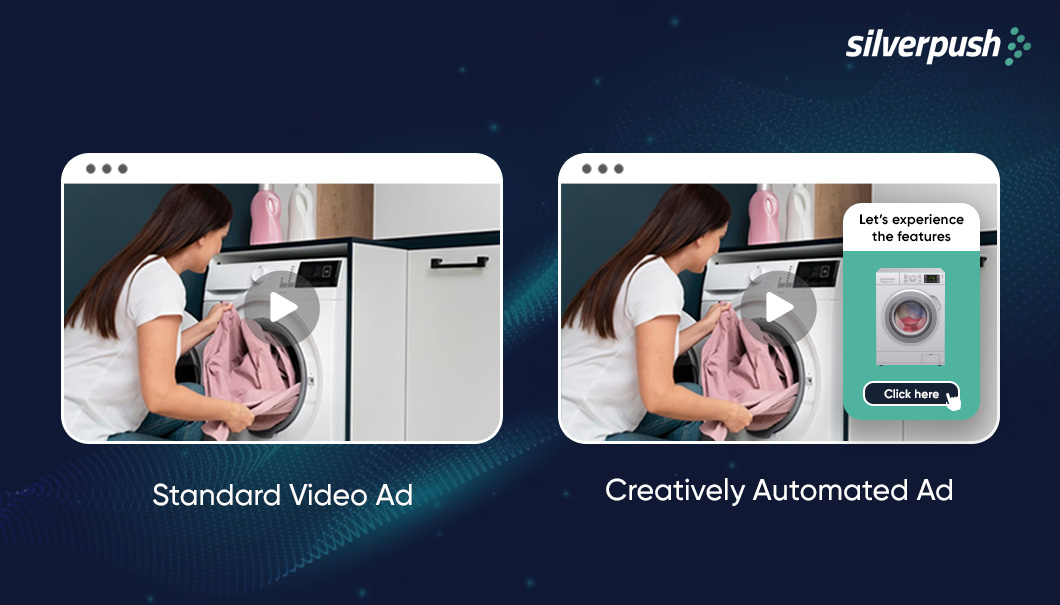
Step into the ever-evolving world of online advertising, where video ads have seamlessly integrated themselves into our digital landscape. The target audience finds no respite, constantly exposed to these ads regardless of their location or activity. Behind each of these ads lies a tremendous effort, with designers painstakingly pouring hours into perfecting the visuals, discarding countless alternatives along the way. Marketers, too, have their part, carefully approving the final ads, hoping for that sought-after engagement.
But here’s the catch—despite all this effort, advertisers are facing an uphill battle in driving engagement. The human brain only retains a meager 3% of most ads it encounters. And that’s not all.
Our audience is bombarded relentlessly with the same repetitive ads, leading to a phenomenon known as “ad fatigue.” In a world where media moves in real-time, brands struggle to keep pace with consumer expectations, forcing them to churn out content in a constant battle for attention. A challenging task, indeed!
So how can advertisers secure a place in that 3%? Well, the answer is simple, focus on interactive video creatives.
How does Creative Play a Role in Driving Engagement?
Ad creatives play a crucial role in ad campaigns. The audience engages with what they see. Before reading the text they analyze how your ad is appearing and if it pleases their eyes it drives them towards the engagement.
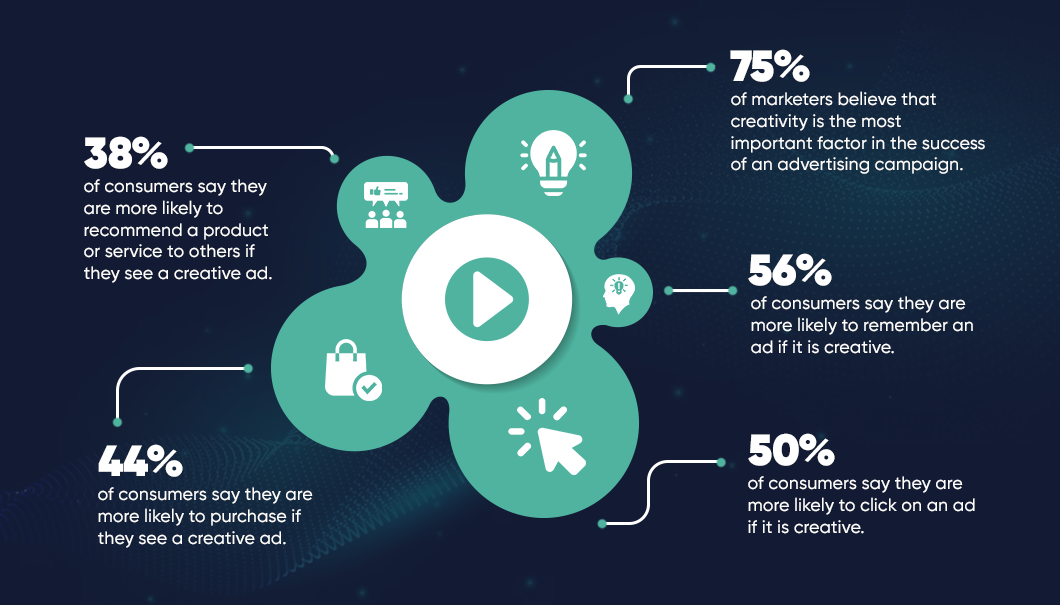
The above statistics have already proven the point that if your ad is capable of captivating audience attention that it can surely drive engagement.
The conventional methods of creative production are no longer viable due to generic ad experiences and inconsistent designs. Brands now seek a more efficient alternative and creative automation has been a powerful resource.
Let’s dive in and understand creative automation is playing a crucial role! but first, let’s understand the basics.
What is Creative Automation?
In simple language, creative automation is the use of software to automate the creation and production of creative content. This can include things like design, copywriting, and video editing.
65% of marketers who have adopted creative automation have seen an increase in the efficiency of their creative production process.
How Creative Automation can help in Keeping the Audience Engaged?
Unlocking your audience’s mind lies in the power of personalization. If your ad fails to resonate, it’s bound to be skipped. That’s where creative automation steps in, empowering advertisers to craft tailored ad creatives that deeply connect with their target audience.
However, effective advertising demands more than just precise targeting. Advertisers must explore additional strategies, and one such solution is optimization. Dynamic video optimization offers the perfect avenue to transform standard video creatives into interactive experiences.
Given the fleeting attention span of audiences, lasting less than 10 seconds, dynamic interactive videos present a game-changing opportunity. By offering engaging elements for your audience to interact with, you can effortlessly extend their attention span to a remarkable 30 seconds or more. Captivate your audience with interactive content, and they’ll linger, enthralled by what you have to offer.
“According to studies, brands can increase their consumer engagement up to 3X with just 15-second interactive ads.”
Engage your Audience with Crafters
Silverpush introduces Crafters, an innovative technology that harnesses real-time data and user insights to revolutionize ad campaigns. Crafters empower advertisers to deliver personalized, highly relevant ad experiences to their audience through precise granular targeting.
With Crafters’ dynamic video optimization solution, advertisers gain full control over every aspect of their ad and strategy. Its endless customization options enable superior video personalization, allowing for seamless re-editing as needed. Crafters even suggest dynamic elements tailored to specific brand requirements, ensuring a truly engaging and impactful advertising experience.
Still, Thinking Why You Must Opt for Creative automation?
Here are some of the benefits of creative automation that you leverage:
1. Increased efficiency: Creative automation can help advertisers save time and money by automating tasks that would otherwise be done manually. This can free up time for marketers to focus on more strategic tasks.
2. Improved quality: Create more high-quality content by ensuring that all creative assets are consistent with the brand’s style guide and that they meet the needs of the target audience.
3. Increased personalization: Personalize content for each customer or lead. This can help marketers build stronger relationships with their customers and leads.
4. Improved ROI: When content is relevant and engaging to the target audience it automatically drives better return on investment.
Conclusion
The advertising landscape is changing rapidly, what yields results today might not work tomorrow. This change is keeping advertisers on their toes.
The only constant conclusion we can drive from the present scenario is that “personalization and relevancy will be driving results in the future” so advertisers must leverage the power of creative automation to stand out in the crowd.
5 Reasons Why CTV Contextual Advertising Will Dominate in 2023
PUBLISH DATE: 21 July 2023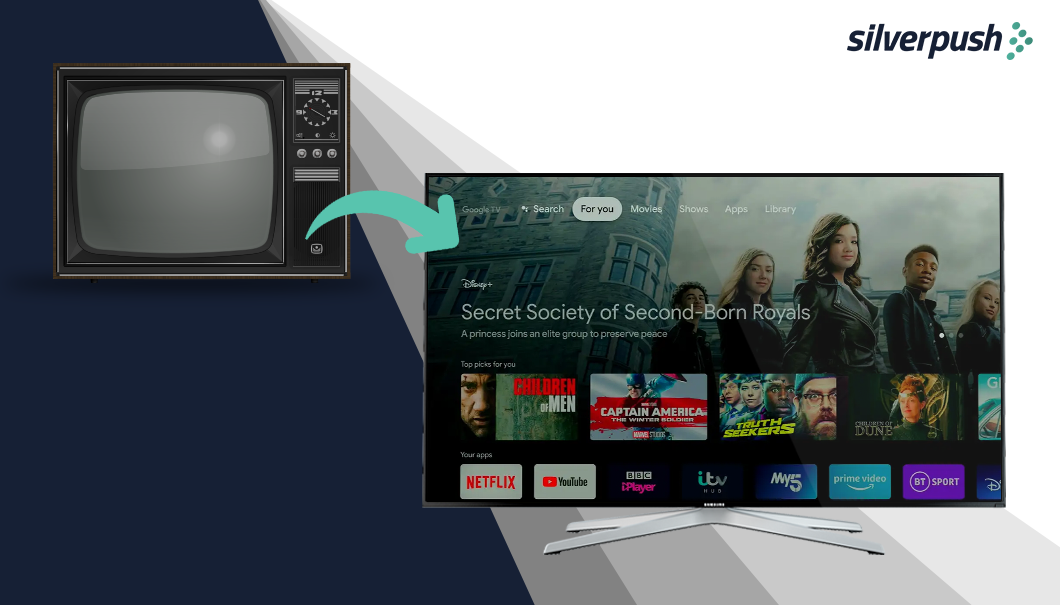
67% of users prefer relevant CTV ads, making it essential for impactful video advertising.
It’s no surprise that consumers worldwide are cutting the cord owing to the increased popularity of streaming services, OTT (Over the Top ), and Connected TV (CTV).
According to predictions, the US CTV ad market is set to more than double between 2021 and 2026.
As many throw around the word “recession,” CTV is primed for continued double-digit growth.
Given the growing importance of CTV, brands are recognizing the significance of advertising on these platforms.
Read the blog to explore the top five compelling reasons that will establish CTV Advertising as the dominant force in 2023.
5 Reasons Why CTV Advertising Will Revolutionize the Industry in 2023
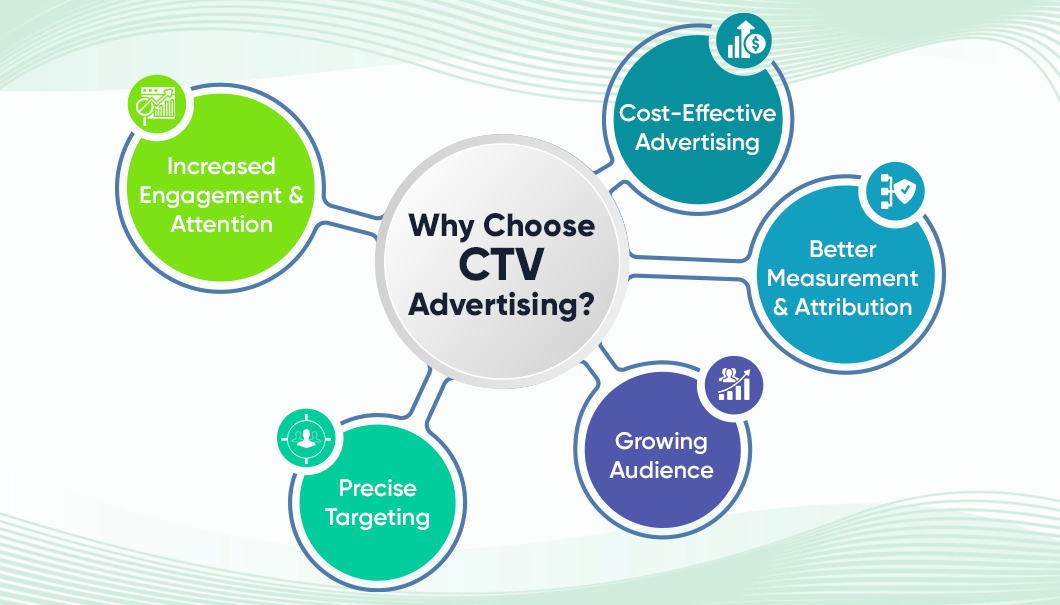
CTV ad breaks are shorter, more relevant, and of higher quality compared to linear TV ads. This leads to increased receptiveness among users, prompting 43% to search for products and 1 in 5 to make purchases.
Here are the 5 factors why CTV will dominate the digital advertising space this year.
1. High Engagement and Attention
CTV advertising is gaining popularity because it provides a highly engaged audience that is entirely focused on the content they are consuming. Unlike traditional TV advertising, where viewers can easily switch channels or fast-forward through commercials, CTV ads cannot be skipped or ignored. As a result, viewers are more likely to pay attention to CTV ads, leading to higher engagement and brand recall.
2. Targeted Advertising
One of the biggest advantages of CTV advertising is the ability to target specific audiences based on demographics, interests, and behavior. With CTV, advertisers can serve ads to specific households or individuals, making it easier to reach the right audience with the right message. This level of targeting is not possible with traditional TV advertising, which relies on broad demographic data.
3. Cost-Effective
CTV advertising is often more cost-effective than traditional TV advertising. With CTV, advertisers can target specific audiences and pay only for the impressions served, which can help reduce wasted ad spend. In addition, CTV ads can be created quickly and easily, making it a more agile and efficient way to advertise.
4. Growing Audience
The CTV audience is growing rapidly. According to eMarketer, the number of CTV users in the US is expected to reach 213.7 million in 2023, up from 182.6 million in 2021. With more people cutting the cord and switching to streaming services, advertisers have an opportunity to reach a wider audience through CTV.
5. Better Measurement and Attribution
With CTV advertising, advertisers can track ad views and measure the effectiveness of their campaigns in real-time. This provides a level of transparency and accountability that is not possible with traditional TV advertising. In addition, CTV advertising allows for better attribution modeling, enabling advertisers to better understand the impact of their campaigns on consumer behavior.
Go Beyond Genres with Mirrors TV
With brands planning significant increases in their CTV ad budget in 2023, it is essential to transition to a contextual solution that extends your reach beyond linear TV.
Mirrors, an AI-Powered key contexts identification platform, is the only visual AI technology that creates analysis for CTV.
It has recently integrated with IRIS TV to leverage its rich video inventory and enhance the effectiveness of CTV ad campaigns and contextually relevant ads.
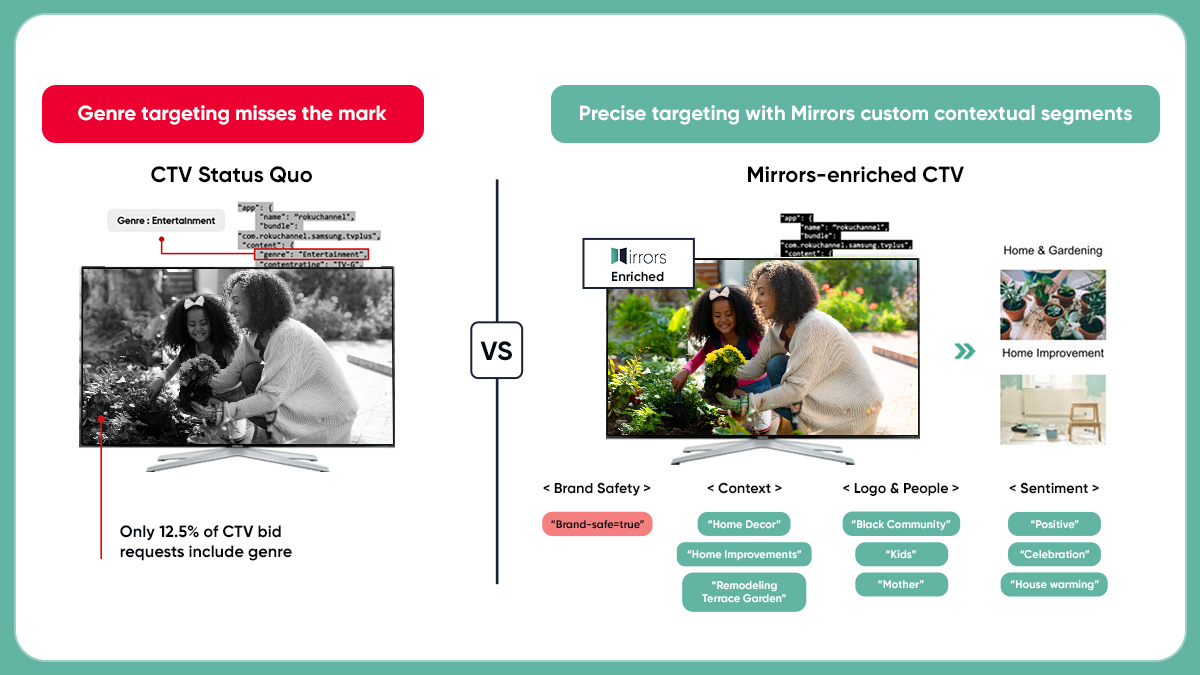
How can Brands Win Big with Mirrors for CTV?
1. Privacy-first and Cookie-less Solutions using AI and Machine Learning for more relevant targeting across CTV platforms.
2. Know what you’re buying at the Video level with contextual transparency that goes behind metadata in the bid stream, genre, and titles.
3. More confidence in your programmatic CTV investment as every Mirrors-enriched video is verified for context while brand safety and suitability are paramount.
4. Activate with ease through your DSP of choice with Mirrors for Programmatic CTV.
5. 300+ IAB aligned and custom segments.
Final Words
CTV contextual advertising is quickly becoming the next big thing in advertising and for good reason, of course! As its popularity grows it’s important for advertisers to start incorporating contextual CTV ads into their marketing strategies to stay ahead of the curve. To get started with Mirrors enriched CTV and leverage all the premium content at scale, kindly fill out the form on your right. Our team of experts will promptly get in touch with you.
Why Do You Need Interactive Dynamic Video Advertising and How to Get Started?
PUBLISH DATE: 21 July 2023
With around 4.9 billion internet users worldwide, representing 62% of the global population, people are exposed to 6,000 to 10,000 advertisements daily.
A staggering amount, isn’t it?
However, the human brain struggles to process such an overwhelming amount of content, leading to ads being ignored or forgotten. To improve consumer attention, brands must adopt effective practices.
Audience engagement has been declining on the standard video ad formats. Today’s audience demands more than just passive viewing experiences.
Let’s delve into this in our article and understand the advanced stage of video advertising – Dynamic Interactive Ads.
What are Interactive Video Ads?
Dynamic interactive video ads are a type of video ad that allows viewers to interact with the ad in a more meaningful way. This can be done through a variety of means, such as clicking on different parts of the ad, dragging and dropping elements, or answering questions.
These types of advertisements provide numerous benefits compared to traditional static video ads. They possess a higher potential for engagement, resulting in increased click-through rates (CTRs) and conversions. Moreover, they offer greater personalization options, enhancing the ad’s relevance to the viewer.
It’s Time Make the Switch to Interactive Video Ads
“According to studies, brands can increase their consumer engagement up to 3X with just 15-second interactive ads.”
Interactive dynamic video advertising is a powerful tool that can help advertisers create stronger ad recall. Still not convinced, here are a few pointers highlighting the advantages of interactive video ads.
1.Increased Engagement: This form of video ads can help to increase engagement by making the ad more interactive and engaging. This can lead to higher click-through rates (CTRs) and conversions.
2. Better Targeting: These video ads can be targeted to specific audiences based on their interests, demographics, and purchase history. This can help to ensure that the ad is seen by people who are most likely to be interested in it.
3. Improved Brand Awareness: They can help to improve brand awareness by making the ad more memorable and engaging. This can lead to increased brand recall and consideration.
5. More Personalized Experiences: Interactive dynamic video ads can be personalized to each viewer, which can help to create a more relevant and engaging experience. This can lead to higher CTRs and conversions.
6. Scalability: This form of video advertising can be easily scaled up to reach a large audience. This is because they can be created and delivered in a programmatic fashion, which means that they can be automatically served to relevant viewers based on real-time data.
5. Cost-effectiveness: It can be more cost-effective than traditional video ads. This is because they can be targeted to specific audiences, which means that they are less likely to be wasted on people who are not interested in them.
Having grasped the compelling advantages of using interactive video ads for their next campaign, let’s explore the essential steps to get started:
Steps to Get Started with Interactive Video Advertising
1. To embark on a successful interactive video ad campaign, advertisers should follow a well-structured approach.
2. Begin by selecting a suitable platform and tools that support interactive video ads.
3. Clearly define campaign objectives, outlining whether the focus is on brand awareness, lead generation, or conversions.
4. Understanding the target audience is paramount; this knowledge will shape the design of interactive elements that resonate with viewers.
5. Craft compelling and visually appealing content to maintain audience interest.
6. Design user-friendly interactions to ensure seamless engagement.
7. Thoroughly test the ad’s compatibility across various devices and browsers before launch.
8. Once the campaign is live, monitor performance metrics and user interactions to make data-driven optimizations.
Leverage Crafters to Boost Your VTR and CTRs
Dynamic video optimization is of utmost importance as it revolutionizes the effectiveness of video advertising campaigns.
By leveraging real-time data and user insights, it allows advertisers to tailor their video content to each viewer, delivering a highly personalized and relevant experience.
This level of customization not only captures the audience’s attention but also fosters a deeper emotional connection with the brand or product.
As a result, viewers are more likely to engage with the ad, leading to increased click-through rates, conversions, and overall campaign success. Lose the green screens, manual video post-production, and patched overlay text.
Crafters, a dynamic video optimization solution by Silverpush, allows you to control every component of the ad and strategy, with endless customization options for superior video personalization and seamless re-editing.

Not Just your Regular Creative Optimization!
Crafters suggest & curate custom dynamic elements as per the brand’s specific needs.
Engage Consumers ‘In the Moment’ with Crafters
Crafters enable the creation and delivery of personalized video ads to users by leveraging various sources of data.

It tailors ads based on location, language, contextual triggers, and content segment which results in giving users a much more personalized and relevant ad experience.
For example, a paint brand can give users an authentic experience of how a particular color would appear.
Conclusion
The advertising landscape is rapidly evolving keeping advertisers on their toes. In these evolving times, they need a solution that delivers better results and boosts their brand awareness. Dynamic Interactive Video Ads are one way to attract users effortlessly and achieve significantly higher CTR and VCR. It’s time to evolve your advertising strategy and stay ahead.
Unwrapping Advanced Contextual Advertising Solutions this Holiday Season
PUBLISH DATE: 14 July 2023
Thrive during the business’s busiest season and succeed with advanced contextual advertising solutions.
Why is this Holiday Season a “Prime” Opportunity for Advertisers?
As we approach the halfway mark of the year, it presents a prime opportunity to proactively plan for your upcoming 2023 holiday campaigns.
In 2022, holiday spending reached approximately $936.3 billion. Looking ahead to 2023, the trend continues; with retail spending expected to increase by 4.5% to $1.328 trillion during this time.
 Research shows that by advertising during this holiday season, ad impressions rise by 50%, click-through rates surge 100%, direct traffic increases by 150%, average order value jumps 30%, and conversation rates soar by 60%.
Research shows that by advertising during this holiday season, ad impressions rise by 50%, click-through rates surge 100%, direct traffic increases by 150%, average order value jumps 30%, and conversation rates soar by 60%.
Now you won’t underestimate the power of holiday season advertising!
Moreover, in the U.S., sales increase dramatically as early as October. As per data, almost 40% of consumers check off items from their holiday shopping lists by the end of October.
If you have not started your holiday advertising yet, the time is now! Leverage this opportunity and position your brand as the top choice in your target audience’s mind. Here are the must-know holiday advertising ideas to kickstart your holiday advertising.
Read More: Ace Back to School Advertising with the Power of Context
Success in Every Season: 4 Simple Holiday Advertising Ideas to Get Started
1. Discover Relevant Audiences in the Cookieless World

Reaching target audiences with ethical personalization and relevant ads has become increasingly difficult due to the demise of third-party cookies and limited first-party data.
Additionally, stereotypical assumptions made by advertisers during the holiday season have led to a decline in click-through rates and overall return on investment (ROI).
A clothing store ad shows women shopping for holiday outfits, reinforcing the stereotype that all women enjoy dressing up. It overlooks the fact that women have diverse interests like outdoor activities, reading, and hiking, beyond just shopping.
To overcome stereotypes, advertisers should create inclusive and personalized messages that respect individual preferences.
By understanding their customers’ unique characteristics, they can deliver engaging ads that appeal to a diverse audience.
Advanced contextual targeting solutions like Mirrors Generative AI have proved to be a co-pilot to human intelligence by eliminating traditional audience-based stereotypes and tapping into unexplored audiences with multiple alternative interests.
This has empowered advertisers to expand their reach without sacrificing engagement, while also enabling them to tap into previously untapped or overlooked audiences.
2. Invest in Omnichannel Advertising

A multi-channel strategy enables you to reach users across different platforms and channels. This is an essential strategy in today’s digital landscape because it can enable you to achieve greater reach by capturing users wherever they are online.
Silverpush’s omnichannel advertising capabilities help advertisers reach their targeted audiences on multiple platforms including YouTube, CTV, Meta, and OpenWeb.
To let advertisers take full control of their advertising campaigns, Silverpush has recently launched Mirrors Self-Serve Chrome Extension to auto-optimize their campaigns with privacy-friendly tags and gain access to real-time data sets.
3. High-Impact CTV ads

The dramatic rise in CTV advertising has brought a major change in advertising budgets and strategies. As audiences flock to streaming platforms, advertisers are following suit, viewing CTV as an ideal space to reach an engaged, targetable audience. Recognizing the potential of CTV as an ideal space for advertisers, Silverpush has integrated with IRIS TV to leverage its rich video inventory and enhance the effectiveness of CTV ad campaigns.
4. Engage Audiences With Interactive Video Advertising

It’s time for advertisers to display ads that allow users to interact with them rather than simply watch them. This can play a very important role in increasing ad engagement and people are more likely to remember your ad. This can lead to better brand awareness and recall, as well as increased click-through rates (CTRs). For this reason, Silverpush has launched cutting-edge dynamic video optimization technology to transform traditional ads into highly advanced interactive ads.
From Festivities to Profitability: Achieve Holiday Marketing Success with Mirrors
This holiday season presents a prime opportunity for advertisers to iron out a powerful advertising strategy. Don’t miss out on this chance to elevate your holiday campaigns with Mirrors. Contact us now to learn more about how Silverpush can transform your holiday advertising strategy and drive success during this festive season.
Silverpush Launches Mirrors Generative AI at Cannes Lions 2023
PUBLISH DATE: 07 July 2023
The Cannes Lions Festival this year encompassed a wide range of experiences, including parties, informal gatherings, and thought-provoking panel discussions. Generative AI continues to dominate discussions, accompanied by other significant topics. Silverpush, the AI advertising pioneer, made its debut at Cannes and launched the world’s first contextual planning tool – Mirrors Generative AI.
This groundbreaking tool represents a significant advancement in the advertising industry, addressing human bias and automating context discovery. By leveraging machine learning, it creates a customized model based on the advertiser’s brief, enabling analysis of videos and key contexts various web content, including webpages and surveys.
Mirrors Generative AI defines the audience’s characteristics and interests, generates relevant content themes, and facilitates the mapping of these themes with contextual signals. This comprehensive approach allows clients to execute highly tailored contextual advertising campaigns that align precisely with their objectives, eliminating the loss of accuracy caused by standardization processes. Silverpush’s Mirrors Generative AI marks a significant advancement in contextual advertising, offering enhanced precision and efficiency in campaign planning and execution.
Silverpush Key Takeaways in Cannes Lions Festival 2023
Here are some key takeaways from the Cannes Lions Festival:
Generative AI: Frenemy or Partner?
The Cannes Lions Festival witnessed extensive discussions on the subject of generative AI. While the advancements in AI and generative technologies have sparked creativity, marketers redirected their attention to exploring how these innovations can drive commercial growth for their brands. Although the utilization of generative AI in advertising is still in its nascent stages, noteworthy examples like Cadbury’s Shah Rukh Khan-My-Ad campaign demonstrated the potential of leveraging AI to create highly targeted and influential content.
Multicultural Advertising
Brands are no longer simply acknowledging inclusivity; they are actively integrating it into their operations and initiatives. This shift was evident at the Cannes Lions Festival, where award-winning campaigns showcased the transformative power of creativity in promoting diversity and inclusivity. These campaigns served as inspiring examples, demonstrating how brands are challenging stereotypes and authentically representing diverse communities. The current focus is on implementing concrete measures to foster inclusivity and authenticity throughout all brand interactions.
Silverpush’s cutting-edge technology uses video analysis to identify key contexts like relevant celebrities of minority community influencers, brands of minority-owned brands, actions, and objects related to multicultural audiences. Additionally, our advanced AI system identifies key contexts in the web various languages that are relevant to the multicultural audience.
The Sustainability Conundrum
At the Cannes Lions Festival, brands presented innovative strategies to minimize their environmental footprint and encourage sustainable practices. It was recognized that additional efforts are necessary to effectively tackle the sustainability crisis and drive substantial progress. While the showcased initiatives were commendable, there was a collective understanding that further action is required to propel sustainability forward and create a more sustainable future.
Silverpush’s advanced AI technology has been able to deliver over 4 billion relevant impressions for over 4000 campaigns for Fortune 500 brands in the past two years. The use of contextual targeting in these campaigns has resulted in a reduction of 1000 tons of CO2eq emissions.
Creative Automation
With media moving in real-time, brands need to keep up by pushing out more content to match consumer expectations. It can be challenging. Content scaling can be expensive with slow and cumbersome creative processes, generic ad experiences, and inconsistent designs. Brands just can’t turn to old-fashioned creative production anymore. The answer is Creative Automation.
Crafters, a one-of-a-kind creative solution by Silverpush streamline your design process and get more done in less time. It creates and delivers personalized video ads to users based on a variety of data sources. Crafters will help you improve the performance of video advertising campaigns by adding a layer of contextual creativity that will drive better business outcomes.
Silverpush Driving Advancements in Advertising
Overall, Silverpush’s debut at the Cannes Lions Festival 2023 marked a significant milestone in the advertising industry with the launch of its groundbreaking tool, Mirrors Generative AI. It showcased Silverpush’s commitment to driving advancements in advertising, enhancing precision and efficiency, and delivering better business outcomes for its clients.
How Does Silverpush Ensure Brand Safety in CTV Advertising?
PUBLISH DATE: 03 July 2023
Connected TV (CTV) is an exceptionally fast-growing advertising channel that continues to gain momentum with no signs of slowing down.
According to data, 87% of US TV households have at least one Internet-connected TV device.
As the number of CTV households continues to rise, advertisers are swarming toward this dynamic advertising platform to maximize the impact of their ad campaigns.
However, it is essential for advertisers to maintain brand safety in CTV advertising by ensuring their ads are not placed alongside inappropriate or offensive content. Failing to do so could severely damage the advertiser’s reputation and alienate its customer base.
Brand Safety Issues on Connected TV Advertising

In 2022, the global brand safety loss was around $3.1 billion and is projected to reach $3.4 billion in 2023.
An eye-opening study conducted by the IAB revealed that a significant 72% of advertisers express concerns about brand safety specifically in the context of CTV advertising.
Adding weight to these concerns, the same study found that 58% of advertisers have encountered instances where their ads were displayed alongside non-brand-safe content on CTV platforms.
These alarming statistics are further supported by real-life examples that highlight the pressing need for brand safety measures in CTV advertising. These instances serve as concrete evidence, illustrating the potential risks and consequences of ads being associated with objectionable or offensive content.
What is the Example of Brand Safety in CTV Advertising?
In 2021, the luxury goods brand faced a brand safety issue when its ads were shown alongside violent content on a CTV platform. The ads were placed next to a platform known for its violent content.
This led to complaints from the product’s customers, who were concerned about their brand being associated with violence.
The brand quickly apologized for the incident and took steps to prevent it from happening again.
The company worked with the CTV platform to ensure that its ads were placed alongside brand-safe content in the future. It also updated its brand safety policies to include CTV advertising.
This incident shows that even the most experienced brands can face brand safety issues on CTV. It is important for brands to be aware of the risks and take steps to mitigate them.
Mirrors TV: Placing Ads in Safe and Suitable Environments for Effective Engagement
Silverpush Mirrors TV is an advanced contextual solution for CTV advertising; leading the way in offering the world’s first in-video visual and audio recognition technology, enabling in-video analysis for CTV.
With its state-of-the-art technology, Mirrors TV empowers advertisers to seamlessly align their ads with the relevant content viewers are engaged with, ensuring a harmonious and immersive viewing experience.
Its cutting-edge AI-powered technology revolutionizes targeting and enables personalized, contextually relevant ads in a secure and suitable environment. Also, the platform leverages enriched 300+ verified IAB category segments, without relying on metadata.
To ensure brand safety in CTV, the platform adheres to privacy regulations such as HIPAA, GDPR, and CCPA. Thus, ensuring refined and accurate targeting to meet suitability needs, allowing brands to easily avoid unsafe, unknown, or unverified channels through custom exclusion features.
How Does Mirrors TV Works?
We utilize cutting-edge AI models to process CTV content, extracting relevant context from the video feed with our advanced key context identification algorithms. Our technology enables us to accurately analyze and categorize video content, providing valuable insights for targeted advertising and content recommendations.

Last Words
Mirrors TV recognizes the significant concern of advertisers regarding brand safety in CTV advertising, and therefore, it plays a crucial role in ensuring the placement of ads in both relevant and secure content. By forging partnerships with trusted and reliable associates, Mirrors TV effectively avoids unsafe, unknown, or unverified channels. Furthermore, Mirrors TV offers customizable exclusion features, enabling advertisers to maintain greater control and ensure their ads appear only in safe and verified environments. With these measures in place, Mirrors TV provides advertisers with the peace of mind they seek, while delivering impactful advertising campaigns.


